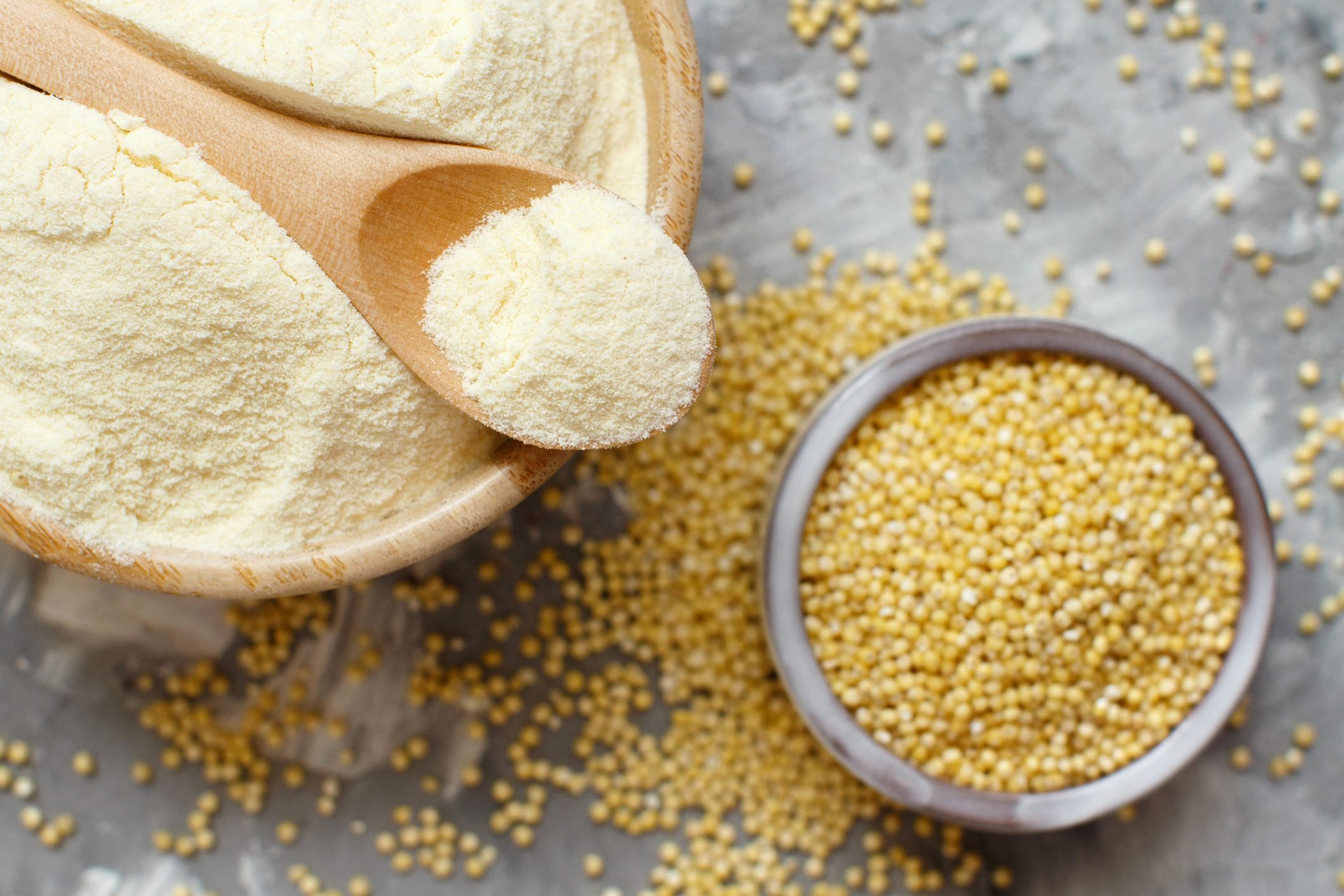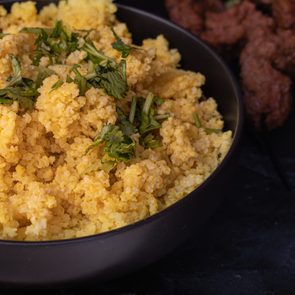What to Know About Using Millet Flour for Gluten-Free Baking
Updated: Jun. 03, 2021
When it comes to gluten-free baking, millet flour is an ideal alternative. Here's everything you need to know about its nutritional profile, plus how to cook and bake with it.
What is millet flour?
If you’ve been following grain- and gluten-free food trends, you’ll want to know about millet flour. It’s another alternative to both white and wheat flours, and it’s more readily available as gluten-free eating increases in popularity.
In fact, in 2020, gluten-free was the sixth most popular diet, after intermittent fasting, clean eating, keto, low carb, and carb cycling), according to the International Food and Information Council’s 2020 Food & Health Survey.
“Millet is a gluten-free grain, so people with celiac disease or non-celiac gluten sensitivity are trying it out,” says E.A. Stewart, RD, a San Diego–based registered dietitian who specializes in gluten-free eating. “In addition, with research supporting eating a wide variety of plant-based foods to support gut health, I’m encouraging my clients to try new grains, including millet.”
Millet flour has a mild and deliciously nutty taste and can be used in recipes for muffins, breads, and more. (Try this millet tot recipe.)
Meet the millet plant
Millet is a cereal grain and was likely first cultivated more than 4,000 years ago in Asia. A major grain in Europe during the Middle Ages—and always a staple in lesser-developed countries—millet is making a comeback in America today. You’ll find millet in everything from breakfast cereals to flour to gluten-free beer.
(Learn more about ancient grains.)
Millet can be turned into flour in a few ways. It can be ground on millstones (or even in a blender or coffee mill if you’d like to make your own) or it can first be puffed and then milled into pre-gelatinized flour.
Nutrition of millet flour
“Millet flour is higher in protein than brown rice flour, the most commonly used gluten-free flour,” says Stewart. “In addition, it contains microbiome-friendly fiber to promote gut health.”
So is millet flour healthy? Absolutely. Here are the nutritional highlights of millet flour, as well as the Daily Value (DV) amounts per 100 grams:
- Calories: 382
- Fat: 4.3 g (6 percent DV)
- Sodium: 4 mg (0 percent DV)
- Carbohydrates: 75 g (27 percent DV)
- Dietary fiber: 4 g (12 percent DV)
- Protein: 11 g (22 percent DV)
- Calcium: 14 mg (1 percent DV)
- Iron: 3.9 mg (22 percent DV)
- Potassium: 224 mg (5 percent DV)
Millet flour contains many other nutrients, including magnesium, manganese, phosphorous, and folate.
“Millet flour is a rich source of antioxidants and low-glycemic carbohydrates,” adds Michelle Routhenstein, RD, a cardiology dietitian and owner of Entirely Nourished. “This ancient grain is also beneficial for heart health because it contains plant lignans and soluble fiber, which have a favorable effect on the gut and LDL [low-density lipoprotein] cholesterol reduction,” she says.

Who shouldn’t eat millet?
One caveat when it comes to consuming millet flour: “While millet flour is nutritious, it is not recommended for people who have problems with their thyroid,” says Divya L. Selvakumar, RD, a registered dietitian in Laurel, Maryland. This is because the flour can drastically reduce iodine levels. “Millet flour contains goitrogens, which can give rise to goiters if not enough of iodine is consumed.”
A goiter is a swelling of the neck caused by an enlarged thyroid. (Beware of the silent signs of an iodine deficiency.)
A primer on gluten
Simply put, gluten is a protein in wheat, rye, barley, and triticale (a cross between wheat and rye). It’s what helps create the light and fluffy texture in baked goods—which is why many gluten-free foods are denser.
Anyone who has celiac disease (a genetic autoimmune disease that affects about 1 percent of the population) or non-celiac gluten sensitivity should avoid gluten. “It’s important to keep in mind that the majority of people should have no trouble eating gluten-containing foods,” says Stewart.
But people who must avoid gluten must really, truly go without it.
“People with the diagnosis of celiac disease should permanently avoid gluten, as it can cause severe damage to the gastrointestinal tract,” says Elizabeth Gunner, RD, a New York City–based registered dietitian. “People who are struggling with a gluten sensitivity or intolerance may also be advised to avoid gluten because similar gastrointestinal damage can be caused to a less-severe degree.”
And remember: Not all gluten-free foods are created equally. “Just because something is labeled ‘gluten-free’ doesn’t mean it’s automatically good for you,” says Gunner.
That’s why it’s important to read the nutrition facts panel to see the nutritional qualities of a food.
Search for a certified gluten-free product
One of the reasons millet is rising in popularity is because it doesn’t contain gluten.
However, a millet-containing product can contain gluten if the millet was grown near wheat, for example, or if it was manufactured on equipment that also manufactures a gluten-containing ingredient.
So if you have celiac disease, make sure to check the label just as you would for any gluten-free food. You’ll want to look for ones that are certified gluten-free. (These are the surprising foods with gluten.)
How to bake with millet flour
When baking, you can safely replace up to 25 percent of the flour in your recipe with millet flour.
You may have the best success by following this tip from Stewart: “As with most gluten-free flours, I recommend combining millet flour with gluten-free starches for baking,” she says. “I like a ratio of 2 cups millet flour, ½ cup tapioca starch, and ½ cup potato starch, plus xanthan gum, for baking bread, cake, and muffins.”
You can also use millet flour to bread chicken or fish, and make vegetable fritters or millet tots. Also try these millet-stuffed red peppers or this millet bread recipe.





















